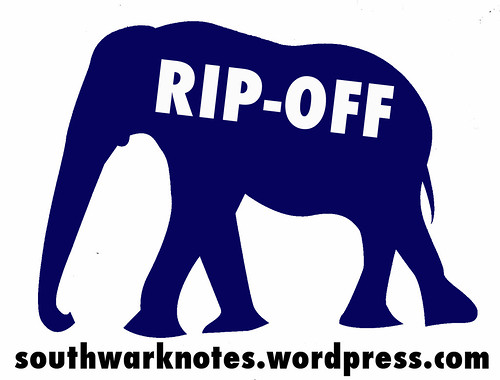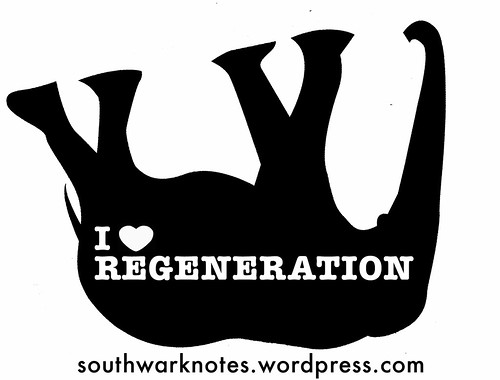
We started on the final rump of Kennington Lane just outside Snap Fitness, where we once again puzzled over the boundary marker in the road pavement. ‘LBC’ as is London Borough of Camberwell which we thought was actually called the Metropolitan Borough of Camberwell. Abolished in the amalgamation of Camberwell, Bermondsey and Southwark in 1965 to form the London Borough of Southwark, this boundary is a cute start anyhow!





•One The Elephant was Lend Lease’s bonus Top Trump that they got from Southwark as an addition to their demolishing of the Heygate Estate.
• Uncle Tower as described before.
• Strata Tower, the mostly private homes tower and the one with the non-functioning wind turbines.
• Hurlock Heights, part of Lend Lease’s Elephant Park development that provided 1000’s of expensive flats for those who wanted to live where 1000+ council tenants used to live. Three bedroom flat at Hurlock is £1.5 million. Old three bedroom on Heygate Estate was approx £120 per week.
• In the mess of these new high rises sits the lovely Draper Estate. The tower block Draper House was opened in 1964 it was the tallest structure in London. The Designed by Hubert Bennett of the London City Council’s (LCC’s) Architects Department. Massive slabs of white, Italian marble creating white vertical bands run up the block.






























































